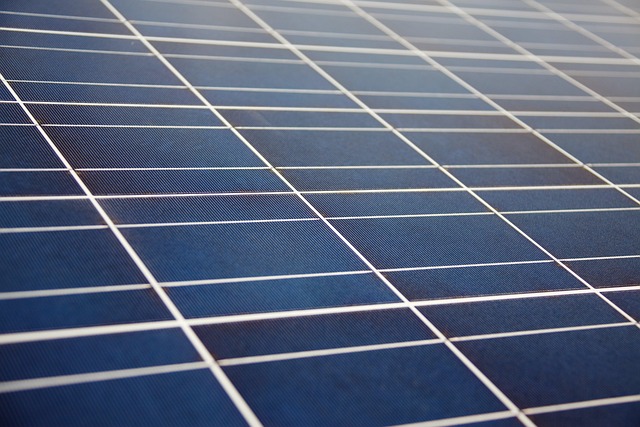
Clean Energy Revolution: How Communities Are Leading the Charge
The transition from fossil fuels to clean energy sources has become one of the most significant movements in modern history. As climate change accelerates and environmental concerns grow, communities around the globe are emerging as the frontline warriors in this clean energy revolution. This article explores how local efforts are shaping renewable energy initiatives, fostering sustainable practices, and promoting environmental stewardship.
The Need for a Clean Energy Transition
As global temperatures rise and natural disasters become more frequent and severe, the urgency to move away from carbon-intensive energy sources cannot be overstated. Traditional sources of energy, largely dominated by coal, oil, and natural gas, contribute heavily to greenhouse gas emissions. This not only jeopardizes our planet’s health but also threatens public health, economies, and ecosystems.
In response, communities are recognizing that they must take the reins to drive change. Local efforts often result in more impactful initiatives than those generated by distant policymakers. Grassroots movements have become powerful catalysts for the clean energy transition, demonstrating that collective action at the community level can lead to significant progress.
The Role of Local Governments
Local governments are increasingly developing policies and setting ambitious goals to reduce greenhouse gas emissions. Many cities have established official carbon neutrality targets, often aiming for dates well within the next few decades. To achieve these targets, local governments are implementing a variety of initiatives to promote clean energy solutions.
One significant approach is the adoption of renewable energy portfolios that require a certain percentage of energy to be sourced from renewable resources. Many municipalities have invested in solar energy initiatives, wind farms, and other forms of clean energy production. Moreover, local governments are facilitating this transition by establishing community solar programs that allow residents, particularly those who may not have access to solar panels, to benefit from solar energy.
Community-Led Renewable Energy Projects
Community solar power projects are just one example of innovative initiatives being implemented at the grassroots level. In a community solar program, local residents can invest in or subscribe to a shared solar power facility. This arrangement allows individuals to benefit from solar energy savings without needing to install panels on their own properties.
One standout example is the Cooperative Solar Initiative in Massachusetts. This program encourages residents to invest collectively in solar projects, thus driving down costs and increasing access to affordable renewable energy. Similar initiatives have sprung up across various regions, demonstrating how community-led approaches can empower local populations while directly addressing renewable energy goals.
Community Engagement and Education
Beyond initiating projects, community engagement in clean energy initiatives plays a crucial role. Educational programs focusing on sustainability encourage residents to understand the benefits of renewable energy, not just for the environment, but also for their local economies and the health of their families.
Workshops, seminars, and community gatherings can help raise awareness about energy conservation practices, energy efficiency improvements, and available incentives for adopting renewable technologies. The ability to inform and mobilize community members is vital for the success of any clean energy endeavor.
Creating Energy Resilient Communities
Furthermore, resilience against climate-related challenges is a pressing concern that communities are addressing through clean energy initiatives. By investing in local renewable energy solutions, communities are constructing energy infrastructures that are less vulnerable to disruptions caused by extreme weather events.
The disaster recovery experiences of communities affected by hurricanes, wildfires, and floods have highlighted the need for localized energy solutions. Sustainable practices, such as village-scale microgrids, allow communities to recover more swiftly in times of crisis while decreasing reliance on centralized power grids, which may be unequipped to handle emergencies.
Collaborative Partnerships
Collaboration is a cornerstone of the community clean energy revolution. Spurring local innovation often stems from partnerships between governments, businesses, non-profits, and educational institutions. Such alliances can leverage resources, knowledge, and technology needed to implement effective clean energy strategies.
One example of this collaboration is the role of universities in researching and promoting clean energy initiatives. Many academic institutions engage with local communities to foster projects that address specific local needs while providing valuable real-world experiences for their students.
The Economic Benefits of Clean Energy
Beyond environmental benefits, investing in clean energy projects yields considerable economic advantages for communities. Transitioning to renewable sources creates jobs in the installation, maintenance, and management of energy production systems. Furthermore, local investments lead to increased energy independence by reducing reliance on imported fuels—an especially impactful consideration for rural and isolated communities.
Additionally, renewable energy projects often stimulate local economies through job creation across sectors. Local manufacturing companies may experience growth by supplying components for solar panels and wind turbines, while service providers, such as electricians and engineers, may benefit from increased demand stemming from new installations.
Case Studies: Successful Community Energy Initiatives
A closer look at specific communities illustrates the transformational potential of grassroots clean energy efforts.
In San Diego, California, a collective movement has led to the formation of the San Diego Community Power. This community choice aggregation program allows residents to choose their electricity provider, emphasizing renewable energy sources. As a result, San Diego is on its way to providing up to 100% renewable energy to its residents by 2035, thus setting a benchmark for other cities.
Another inspiring example can be witnessed in the town of Freiburg, Germany, which has become a leader in sustainable urban development. Through ambitious policies promoting renewable energy and efficient transportation, Freiburg has cultivated a strong local economy focused on sustainability. The city’s efforts have attracted green businesses and created thousands of jobs, serving as a model worldwide.
Challenges and Solutions
Despite their successes, communities face numerous challenges in their quest for clean energy adoption. Limited funding, regulatory barriers, and resistance to change can hinder progress. However, innovative approaches can help surmount these challenges.
Community fundraising initiatives, for example, create financial support for clean energy projects while also fostering local ownership. Crowdfunding platforms can connect residents interested in clean energy solutions with potential investors who share a commitment to sustainable practices. Moreover, strong advocacy campaigns help focus public attention and pressure local leaders to prioritize renewable energy initiatives.
In some regions, establishing clear regulatory pathways for renewable energy projects can facilitate expansion efforts, ultimately leading to results more quickly. Partnerships with local utilities can pave the way for valuable incentives that encourage clean energy adoption and lower the initial costs of installation.
The Future of Community-Led Clean Energy
The clean energy revolution is far from over, and community involvement is critical for driving continued progress. As localities increasingly prioritize sustainability, the collaboration between grassroots organizations and local governments becomes essential. Grassroots efforts fueled by community passion, education, and collaboration promise to stimulate innovation and inspire significant change.
There are several exciting avenues for further exploration, including the potential for community-driven research and development in new technologies, the integration of energy storage solutions, and innovative financing methods. Each community will adapt its approach based on local context and challenges as they strive towards a sustainable energy future.
Conclusion
Communities are leading the charge in the clean energy revolution by embracing localized, inclusive solutions. It’s a movement that demonstrates the power of individuals coming together for a common cause. As we stand on the brink of significant environmental changes, the actions taken by these communities offer a hopeful glimpse into the future. By prioritizing collaboration, education, and innovation, communities around the globe can continue to make enormous strides toward a sustainable and clean energy future.



